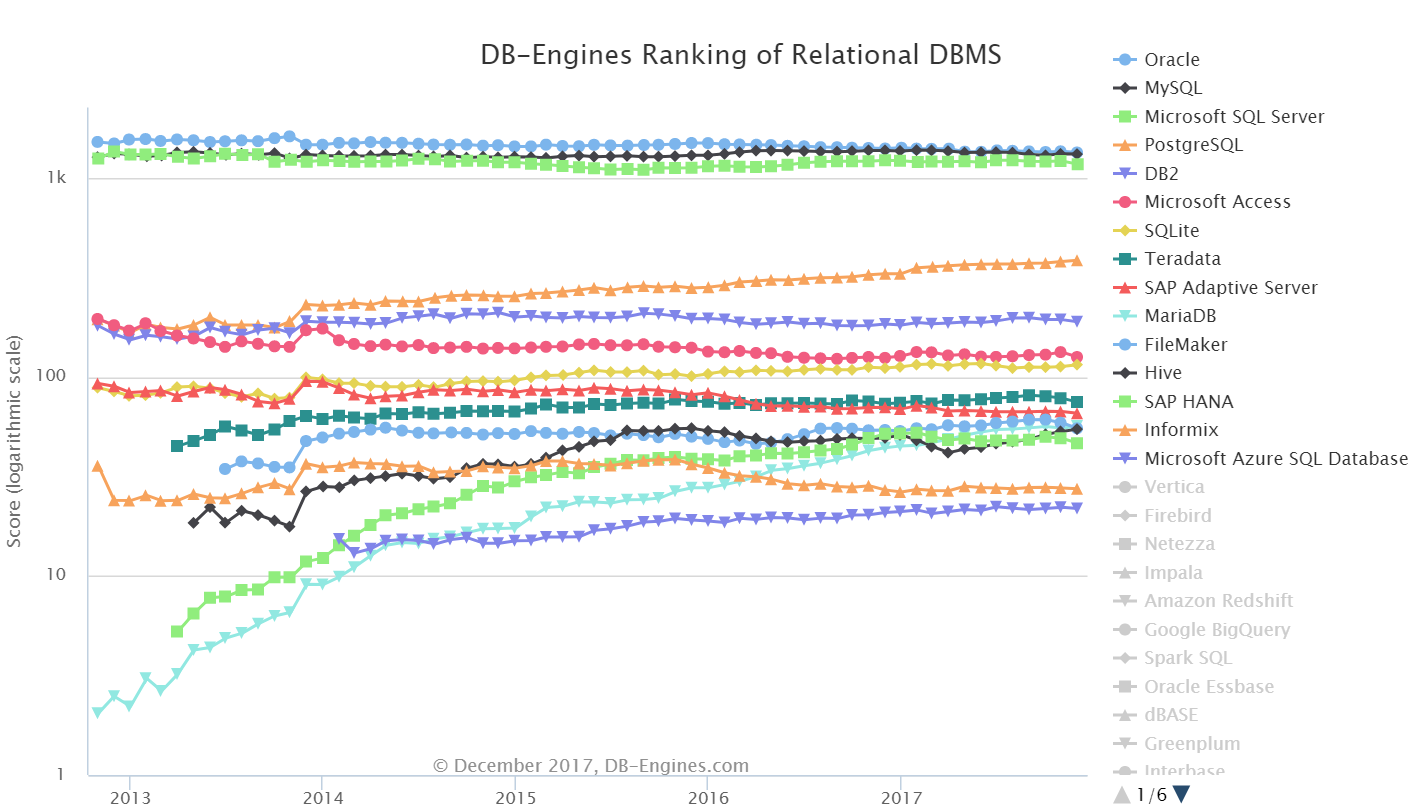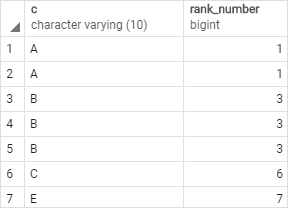

The total of rows per subject column may not reflect the number of rows within a partition when there are ties. > NOTE: Notice that some rows have tied rankings. Next, the point values rankings in the specific subject columns are ranked from the lowest point values to the highest point values.

The two rankings of rows named HRM are in 8th and 9th place however both of their rankings are “8” because they are indeed tied for the 8th place ranking.Īnother PARTITION BY subclause example to consider The subsequent rows with the same point value of “2” are ranked the same because they are tied for 2nd place ranking. They each have a rank of “10” because they are tied for 10th place. Here’s an example of a syntax SQL RANK() function in a script:Įxplanations of the details of the ranking exampleĪlthough 12 rows are ranked, due to ties, the rankings range from a row with the lowest rank of “1” to the highest rank of “10.” For example, focus on the 10th, 11th, and 12th rows.Rows of equal rank will have comparable ranks for easier identification.Īn example of the function ‘RANK()’ syntax
Postgresql rank how to#
The examples shown in this tutorial will clarify how to read the results.

For example, if there are ties, row rankings may not reflect their actual designated rows like “1, 2, 3,” and so on. Therefore, it doesn’t work in a typical consecutive manner, if there are tied ranks. The number of rows that are tied together are added together, and that number is used as the designation number for the next row’s rank that isn’t tied. The number one rank belongs to the row at the top. The subclause PARTITION BY is how the groups are separated within the partition. The result rows are located in a partition. To gain a better understanding, let’s go over some basics about how the RANK() function works.
Postgresql rank install#
PostgreSQL – Install it and any dependencies required. This tutorial explains how to designate a rank to the rows within a query result using the RANK() function in PostgreSQL. It’s beneficial because you can obtain the data you need much faster and make insightful decisions based on the rows of ranked results. Each row can be ranked in each partitioned group within the results set. When you use it to query, you have the ability to separate the rows of the result response. Among the most helpful functions in PostgreSQL is SQL RANK(). Etc.PostgreSQL, the popular object-relational database management system (ORDBMS), has several powerful functions to assist application developers and DBAs in managing their data expeditiously. So it starts same with three ones, but has next value 4, which means i=2 (new value) was met at row 4. Rank Not to confuse with dense_rank this function orders ROW NUMBER of i values.

Row_number orders ROWS as they are listed. So the last value of dense_rank is the number of distinct values of i. Then it meets value i=3 at 6th row, so it show 3. fourth row i=2, it is second value of i met, so dense_rank shows 2, andso for the next row. i=1 appears, so first row has dense_rank, next and third i value does not change, so it is dense_rank shows 1 - FIRST value not changed. The result is: i | dense_rank | row_number | rankĭense_rank orders VALUES of i by appearance in window. With the table wf_example created in previous example, run: select i


 0 kommentar(er)
0 kommentar(er)
